- Home
- Joyce Carol Oates
American Melancholy
American Melancholy Read online
Publisher’s Note
Rendering poetry in a digital format presents several challenges, just as its many forms continue to challenge the conventions of print. In print, however, a poem takes place within the static confines of a page, hewing as close as possible to the poet’s intent, whether it’s Walt Whitman’s lines stretching to the margin like Route 66, or Robert Creeley’s lines descending the page like a string tie. The printed poem has a physical shape, one defined by the negative space that surrounds it—a space that is crafted by the broken lines of the poem. The line, as vital a formal and critical component of the form of a poem as metaphor, creates rhythm, timing, proportion, drama, meaning, tension, and so on.
Reading poetry on a small device will not always deliver line breaks as the poet intended—with the pressure the horizontal line brings to a poem, rather than the completion of the grammatical unit. The line, intended as a formal and critical component of the form of the poem, has been corrupted by breaking it where it was not meant to break, interrupting a number of important elements of the poetic structure—rhythm, timing, proportion, drama, meaning, and so on. A little like a tightrope walker running out of rope before reaching the other side.
There are limits to what can be done with long lines on digital screens. At some point, a line must break. If it has to break more than once or twice, it is no longer a poetic line, with the integrity that lineation demands. On smaller devices with enlarged type, a line break may not appear where its author intended, interrupting the unit of the line and its importance in the poem’s structure.
We attempt to accommodate long lines with a hanging indent—similar in fashion to the way Whitman’s lines were treated in books whose margins could not honor his discursive length. On your screen, a long line will break according to the space available, with the remainder of the line wrapping at an indent. This allows readers to retain control over the appearance of text on any device, while also indicating where the author intended the line to break.
This may not be a perfect solution, as some readers initially may be confused. We have to accept, however, that we are creating poetry e-books in a world that is imperfect for them—and we understand that to some degree the line may be compromised. Despite this, we’ve attempted to protect the integrity of the line, thus allowing readers of poetry to travel fully stocked with the poetry that needs to be with them.
—Daniel Halpern, Publisher
Dedication
For my poet-friend Henri Cole; and in memoriam,
Charlie Gross, first reader and beloved husband
Contents
Cover
Title Page
Publisher’s Note
Dedication
I.
The Coming Storm
In Hemp-Woven Hammocks Reading the Nation
Exsanguination
Little Albert, 1920
Harlow’s Monkeys
Obedience: 1962
Loney
The Coming Storm
Edward Hopper’s “Eleven A.M.,” 1926
II.
The First Room
The First Room
Sinkholes
That Other
The Mercy
The Blessing
This Is not a Poem
Apocalypso
III.
American Melancholy
To Marlon Brando in Hell
Too Young to Marry But Not Too Young to Die
Doctor Help Me
Old America Has Come Home to Die
Jubilate: An Homage in Catterel Verse
Kite Poem
American Sign Language
Hometown Waiting For You
IV.
“This Is the Time . . .”
Hatefugue
A Dream of Stopped-Up Drains
Bloodline, Elegy
Harvesting Skin
“This is the Time for Which We Have Been Waiting”
The Tunnel
Palliative
Acknowledgments
About the Author
Also by Joyce Carol Oates
Copyright
About the Publisher
I.
The Coming Storm
In Hemp-Woven Hammocks Reading the Nation
This is the season when the husbands lie
in their hemp-woven hammocks for the last time
reading the Nation in waning autumn light
before dusk rises from the earth
before the not-knowing if (ever) (again) the earth
will turn on its axis to the light, the great furnace
of the light, will it return the husbands to the light
in their hemp-woven hammocks reading the Nation.
Exsanguination
Life as it unspools
ever more eludes
examination.
We wonder what is best—
exsanguination in a rush,
or in 1,000 small slashes.
Little Albert, 1920
I was Little Albert.
Nine months old in the famous film.
In a white cotton nightie, on a lab
table sitting upright
facing a camera.
Remember me? Sure.
You do.
First, you saw that I was a “curious” baby.
You saw that I blinked and stared
with all the intensity of an infant-brain
eager to suck into its galaxy of neurons
all of the world. You saw that
I was you.
You saw that I was a “fearless” baby.
You saw that I was not frightened
of a burning newspaper held before me
at an alarmingly close range.
Though indeed my rapt infant-face
expressed the classic wariness of our race.
Next, you saw that I was not frightened
of a frisky monkey darting close about me
on a leash. You saw
that I was not frightened
by a large dog brought close to me
nor by a quivering rabbit, nor
a small white rat—
nor even a Santa Claus mask
worn by a menacing male figure
clad in white, shoved close
to my infant face.
You saw that I was attracted to the small white rat.
You saw that I reached out to touch the small white rat.
And as I reached for the small white rat
behind my head came an explosion of noise—
the shock of it sent me sprawling, cringing,
face contorted in terror, mouth
a perfect O of anguish, howling—
as the experimenter John Watson struck
a metal pipe with a hammer.
What a shock!—how terror
rushed through me. How
desperately I crawled
to escape almost toppling
off the edge of the table—
except adult hands restrained me.
Children naturally fear loud noises.
Children naturally fear surprises.
Children naturally fear the unknown.
Children can be taught to fear the known.
The second experiment was one month later.
No escape for me for I was Little Albert.
Grim as a little gargoyle
in white cotton nightie able
to sit upright though now wary,
distrustful. No joy in my little body
as (again) a small white rat
was introduced to me. You saw
how this time I shrank away. How
this time there was terror in my face.
&nbs
p; How this time I did not reach
with infant eagerness for the small white rat
for I’d learned to fear and hate
the small white rat. And again
(you saw) how the very presence
of the small white rat
precipitated a deafening clamor
as John Watson another time
struck a metal pipe
with a hammer again, again and
again behind my head for
who was there
to stop him? In this way
establishing on film
how (baseless) fear can be instilled
in a subject where fear had
not previously existed and
how memory of this (baseless) fear
will endure contained
in the unfathomable brain.
How I cried and cried! As if
I’d known that my mother had
received but one dollar for
the use of me in John Watson’s psych lab
in the experiment that would destroy me
and make John Watson famous.
For in the alchemy of my brain
my fear of a small white rat
had become generalized
and now (as Watson ably demonstrated)
I feared the monkey, the dog, the rabbit
equally though each was unaccompanied
by a clanging hammer.
Now I feared the menacing figure
in the Santa Claus mask as if
understanding that Santa Claus
was my tormentor. Cried
and cried and could not be
consoled, even a woman’s
fur coat terrified me for
how could I trust softness?
Sudden movements, sounds
behind my head—
the unexpected . . .
Classic Pavlovian conditioning.
Bedrock of behavioral psychology.
Brilliant pioneer John Watson!
You are wondering: did John Watson
de-condition me? No. He did not.
Did another experimental psychologist
de-condition me? No. He did not.
Ask me what was the remainder of my life.
Ask me did I adjust to life after the
infamous experiment. Ask me
did I overcome my terror of animals?—
the answer is not known for
I died of hydrocephalus at age six.
All this was long ago. Things are different now.
John Watson would not be allowed to terrorize
Little Albert in his famous experiment now.
Ours is an ethical age.
Or was it all a bad dream? Were you deceived?
You were Little Albert? You were conditioned
to fear and hate? You were conditioned to
thrust from you what you were meant to love?
You were the victim? You were the experimental subject?
You were Little Albert, who died young?
Harlow’s Monkeys
Assume that we are not monsters for
we mean well.
—Harry Harlow (1905–1981)
1.
To be a Monkey
is to be funny
If funny
you don’t hurt
& if you don’t hurt
you don’t cry
& if you don’t cry
the noise you make is funny
& if it is funny
people can laugh
for it is all right
for people to laugh
at a Monkey
& people are happy
if people laugh
& the one thing they agree
is a Monkey is funny
2.
Oh! it is not funny
to hear a Monkey
scream for a Monkey
scream is identical
to a human scream
& a human scream is
not funny
So in the Monkey Lab
to maintain calm
Dr. Harlow had
no choice but
to “surgically remove”
Monkey vocal cords
so if there is a (Monkey) scream
not heard
how is it a scream?
3.
We were Harlow’s Monkeys
& Dr. Harlow was our Daddy
in the famous lab
at Madison, Wisconsin
from which you did not leave
alive
hairless bawling infants
taken from our mothers
at birth to dwell
in Harlow’s hell
“social isolation”
“maternal deprivation”
to be a Monkey
is funny
nursing the dugs
of a bare-wire doll
clinging to
a towel
draped over
a bare-wire doll
seeking milk, love
where there’s none
yet: seeking milk,
love where
there’s none.
yet: seeking
How could a Monkey
be sad, could a Monkey
spell the word—“sad”—?
In the bottom
of the Monkey cage
listless & broken
when the wire doll too
is taken away
“learned helplessness”
“pit of despair”
You laugh, for you
would never so despair
mistaking a wire doll
for a Mother
or a devil
for a Daddy
4.
(Look: in any lab
you had
to be cruel
to publish
& succeed.
As Israel, Harry
changed his name
to Harlow, Harry
to publish
& succeed.
Just had
to be cruel
the way today
a baby calf
in its cage
grows
slowly
to veal.)
Obedience: 1962
1.
Because it was explained to you, you must follow orders.
Because the white coat explained to you, you must follow orders.
Because the voice of the white coat explained to you, you must
follow orders.
Because the white male voice explained to you, you must follow
orders.
Because the laboratory setting explained to you, you must follow
orders.
Because the fluorescent lights explained to you, you must follow
orders.
Because the turreted university explained to you, you must
follow orders.
2.
Because it was 1962, in the wake of the trial of Adolf Eichmann.
Because the question was—How could human beings perpetrate such
acts upon one another?
Because to understand the Holocaust you must understand
the soul of humankind.
Not what the soul speaks but how the soul behaves you must
understand.
Because you agreed to participate in an experiment testing
“memory” in the laboratory of Stanley Milgram at Yale.
Because you agreed to participate in an experiment testing the
relationship of punishment to “memory.”
Because the experiment in “memory” was not an experiment in
“memory” but in “obedience”—(it was not explained to you).
Because Stanley Milgram wanted to understand the Holocaust.
Because Stanley Milgram would have perished in the Holocaust
if he’d been born in Europe like his Jewish relati
ves, so Stanley
Milgram wanted to understand the Holocaust in the only way a
scientist can understand which is through experimentation.
Through an experiment enacted upon a subject kept in ignorance of
the perimeter of the experiment.
Through an experiment enacted upon a subject kept in ignorance
that he was in fact the subject.
Because it was explained to you, you would play the role of the
“teacher” in the experiment.
Because it was explained to you, the “teacher” must follow the
orders given him.
Because it was explained to you, the “teacher” must punish the
“learner” when he errs.
Because it was explained to you, if there is punishment there must
be one who is punished.
Because it was explained to you, if there is punishment there must
be a punisher.
Because the learner was in another room, you could not see his face
when you administered shocks to him.
(True, you could hear the learner’s screams. But you could not see
his face.)
(If you cannot see the face, is there a victim?)
(If you do not know the name, is there a victim?)
(If you are not to be blamed, can you be blamed?)
Because the voltage was mild at first—fifteen volts.
Because the voltage rose slowly—forty volts, seventy volts . . .
Because eager to please.
Because good.
Because obey.
Because four dollars an hour.
. . . two hundred twenty volts, three hundred volts . . .
Because it was explained to you, you must continue to the end.
Because it was explained to you, you would not be blamed.
Because you broke into a sweat of anguish and yet—you obeyed.
Because you broke into hysterical laughter and yet—you obeyed.
Must follow orders, continue to the end, will not be blamed—you obeyed.
. . . four hundred seventy-five volts.
3.
Because in the deep brain, the chanting of elders.
Do as we say. Do as we say. Do as we say.
Because in the deep brain, the elders have no pity.
Do as we say. Do as we say. Do as we say.
Because in the deep brain, no soul but pebbles thrust into the
mouth.
Do as we say. Do as we say. Do as we say.
Because the Holocaust was not possible without following orders.
Because the Holocaust was not possible without continuing to the
end.
Because the Holocaust was not possible without you.

 Starr Bright Will Be With You Soon
Starr Bright Will Be With You Soon My Heart Laid Bare
My Heart Laid Bare A Fair Maiden
A Fair Maiden The Doll-Master and Other Tales of Terror
The Doll-Master and Other Tales of Terror Wild Nights!: Stories About the Last Days of Poe, Dickinson, Twain, James, and Hemingway
Wild Nights!: Stories About the Last Days of Poe, Dickinson, Twain, James, and Hemingway Two or Three Things I Forgot to Tell You
Two or Three Things I Forgot to Tell You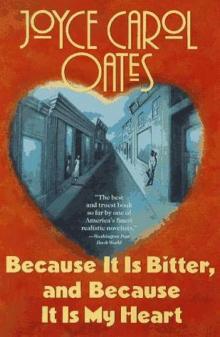 Because It Is Bitter, and Because It Is My Heart
Because It Is Bitter, and Because It Is My Heart Missing Mom: A Novel
Missing Mom: A Novel The Gravedigger's Daughter: A Novel
The Gravedigger's Daughter: A Novel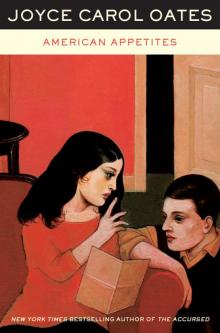 American Appetites
American Appetites Black Dahlia White Rose: Stories
Black Dahlia White Rose: Stories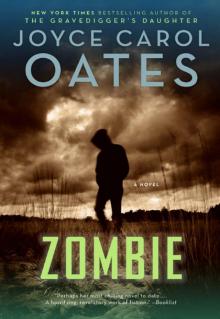 Zombie
Zombie Soul at the White Heat: Inspiration, Obsession, and the Writing Life
Soul at the White Heat: Inspiration, Obsession, and the Writing Life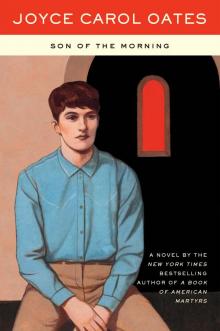 Son of the Morning
Son of the Morning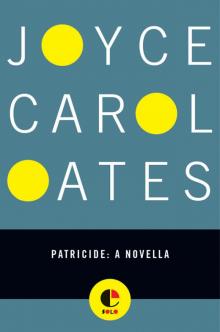 Patricide
Patricide Snake Eyes
Snake Eyes Wonderland
Wonderland In Rough Country: Essays and Reviews
In Rough Country: Essays and Reviews Little Bird of Heaven
Little Bird of Heaven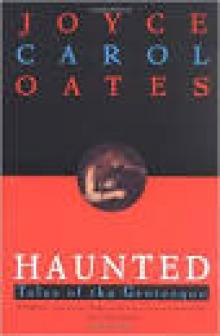 The Haunting
The Haunting The Accursed
The Accursed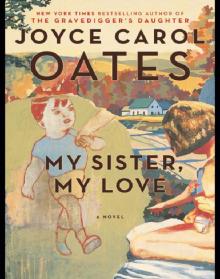 My Sister, My Love: The Intimate Story of Skyler Rampike
My Sister, My Love: The Intimate Story of Skyler Rampike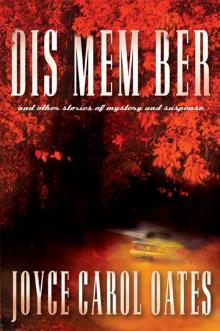 Dis Mem Ber and Other Stories of Mystery and Suspense
Dis Mem Ber and Other Stories of Mystery and Suspense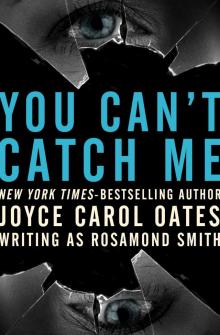 You Can't Catch Me
You Can't Catch Me Daddy Love: A Novel
Daddy Love: A Novel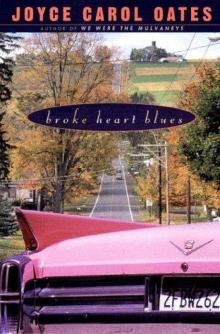 Broke Heart Blues
Broke Heart Blues I'll Take You There
I'll Take You There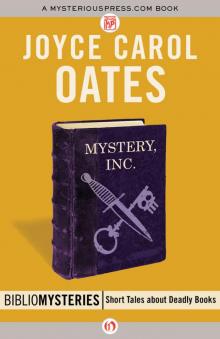 Mystery, Inc.
Mystery, Inc. We Were The Mulvaneys
We Were The Mulvaneys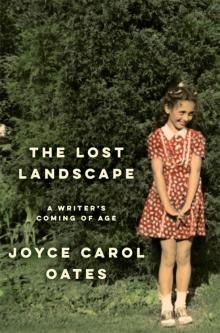 The Lost Landscape: A Writer's Coming of Age
The Lost Landscape: A Writer's Coming of Age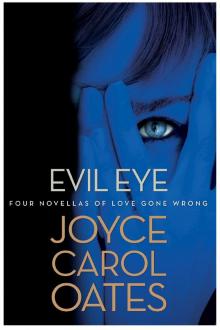 Evil Eye: Four Novellas of Love Gone Wrong
Evil Eye: Four Novellas of Love Gone Wrong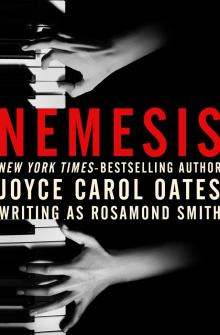 Nemesis
Nemesis Beautiful Days: Stories
Beautiful Days: Stories On Boxing
On Boxing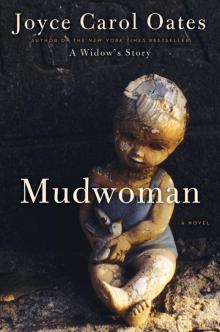 Mudwoman
Mudwoman Hazards of Time Travel
Hazards of Time Travel Night-Gaunts and Other Tales of Suspense
Night-Gaunts and Other Tales of Suspense Mysteries of Winterthurn
Mysteries of Winterthurn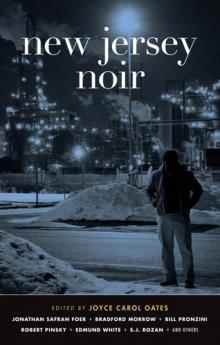 New Jersey Noir
New Jersey Noir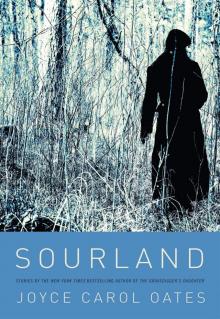 Sourland
Sourland Blonde
Blonde The Corn Maiden: And Other Nightmares
The Corn Maiden: And Other Nightmares The Oxford Book of American Short Stories
The Oxford Book of American Short Stories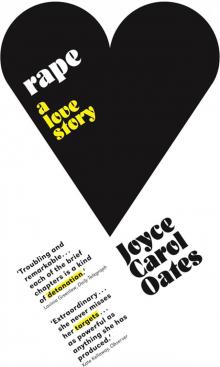 Rape: A Love Story
Rape: A Love Story Lovely, Dark, Deep: Stories
Lovely, Dark, Deep: Stories After the Wreck, I Picked Myself Up, Spread My Wings, and Flew Away
After the Wreck, I Picked Myself Up, Spread My Wings, and Flew Away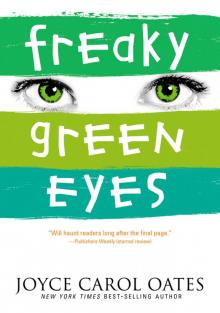 Freaky Green Eyes
Freaky Green Eyes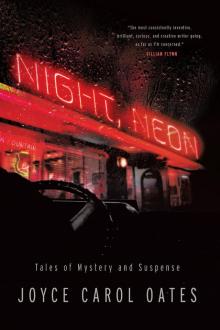 Night, Neon
Night, Neon I Am No One You Know: And Other Stories
I Am No One You Know: And Other Stories Black Water
Black Water Expensive People
Expensive People The Falls
The Falls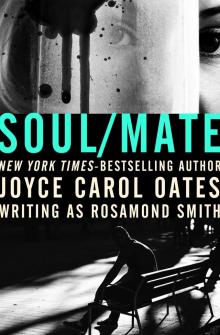 Soul/Mate
Soul/Mate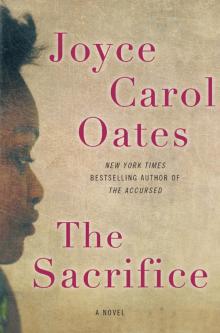 The Sacrifice
The Sacrifice The (Other) You
The (Other) You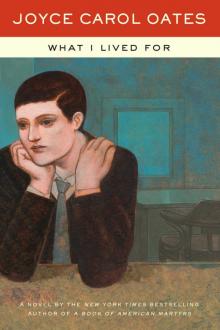 What I Lived For
What I Lived For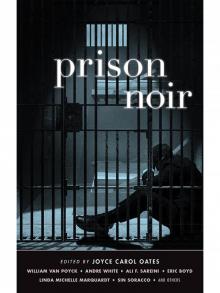 Prison Noir
Prison Noir High Crime Area: Tales of Darkness and Dread
High Crime Area: Tales of Darkness and Dread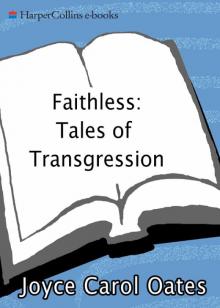 Faithless: Tales of Transgression
Faithless: Tales of Transgression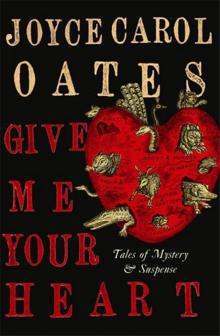 Give Me Your Heart: Tales of Mystery and Suspense
Give Me Your Heart: Tales of Mystery and Suspense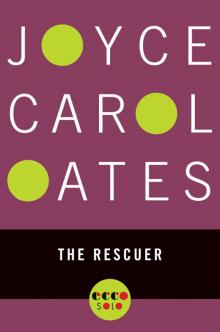 The Rescuer
The Rescuer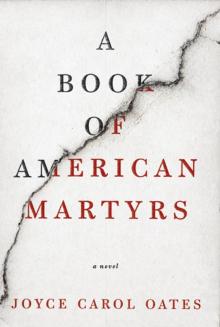 A Book of American Martyrs
A Book of American Martyrs American Melancholy
American Melancholy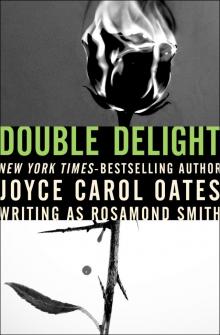 Double Delight
Double Delight Big Mouth Ugly Girl
Big Mouth Ugly Girl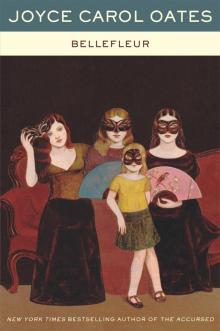 Bellefleur
Bellefleur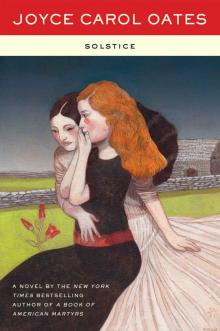 Solstice
Solstice Big Mouth & Ugly Girl
Big Mouth & Ugly Girl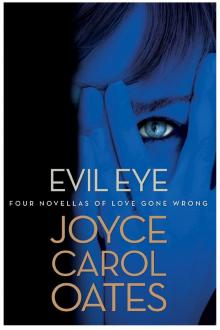 Evil Eye
Evil Eye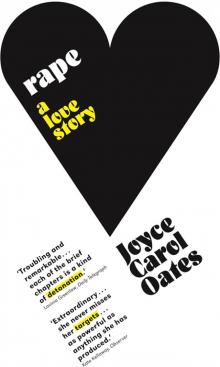 Rape
Rape The Man Without a Shadow
The Man Without a Shadow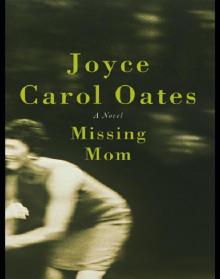 Missing Mom
Missing Mom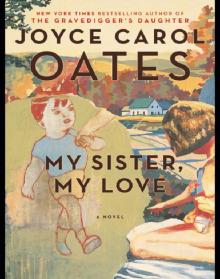 My Sister, My Love
My Sister, My Love The Gravedigger's Daughter
The Gravedigger's Daughter Beautiful Days
Beautiful Days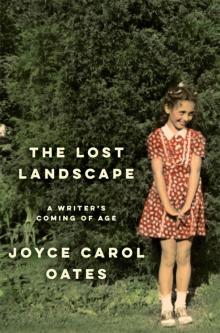 The Lost Landscape
The Lost Landscape Daddy Love
Daddy Love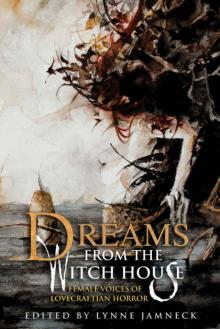 Dreams from the Witch House: Female Voices of Lovecraftian Horror
Dreams from the Witch House: Female Voices of Lovecraftian Horror The Tattooed Girl
The Tattooed Girl Give Me Your Heart
Give Me Your Heart In Rough Country
In Rough Country The Journal of Joyce Carol Oates
The Journal of Joyce Carol Oates Black Dahlia & White Rose: Stories
Black Dahlia & White Rose: Stories High Crime Area
High Crime Area Lovely, Dark, Deep
Lovely, Dark, Deep A Widow's Story
A Widow's Story Soul at the White Heat
Soul at the White Heat Wild Nights!
Wild Nights!